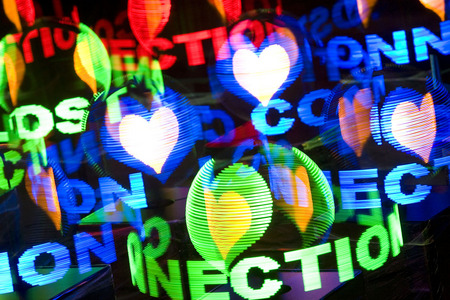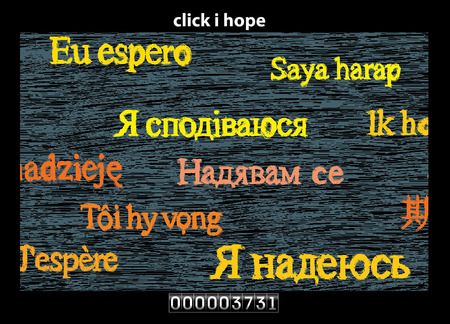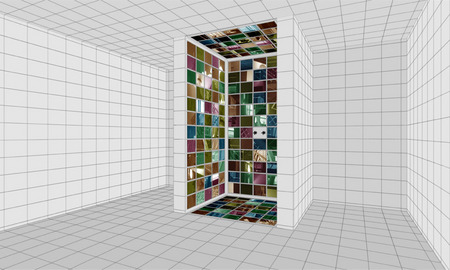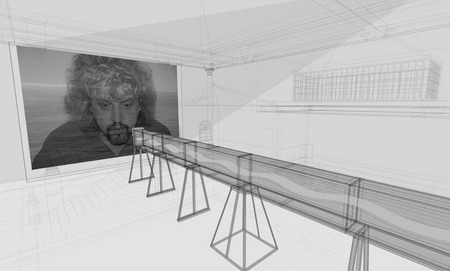CLICK I HOPE
AES+F, Alexander Ponomarev, Andrey Bartenev, Julia Milner, Аrseny Mescheryakov






Andrey Bartenev. Connection Lost. 2007. Sketch of installation. Artist’s collection. Courtesy Multimedia Art Centre
AES+F. Last Riot. 2007. Video-installation. Courtesy Multimedia Art Centre, Triumph Gallery
Julia Milner. Still from the net-art project “Click I Hope”. 2007. Net-art. Artist’s collection. Courtesy Multimedia Art Centre
Alexander Ponomarev, Аrseny Mescheryakov. Shower. 2007. Sketch of installation. Artist’s collection. Courtesy Multimedia Art Centre
Alexander Ponomarev. Windshield Wipers. 2007. Sketch of installation. Artist’s collection
Alexander Ponomarev. Wave. 2007. Sketch of installation. Artist’s collection. Courtesy Multimedia Art Centre
Venice, 10.06.2007—21.11.2007
exhibition is over
52 International art exhibition la biennale di Venezia 2007
Russian pavilion
Share with friends
Artists:
AES + F, Andrey Bartenev, Julia Milner, Arseny Mescheryakov, Alexander Ponomarev
Commissioner: Vasily Tsereteli
Curator: Olga Sviblova
Architect: Sergey Mironenko
Co-ordination: Ekaterina Kondranina
For the press
The early 21st century challenges us to construct a frame of reference that determines our individual and communal independence from the maximum density of information that assails everyone as globalization rapidly develops and as collective utopias vanish.
The Russian pavilion presents installations by Julia Milner, Alexander Ponomarev, Arseny Mescheryakov, Andrey Bartenev and AES+F. All these artists respond to this issue in their individual manner.
Alexander Ponomarev and Arseny Mescheryakov focus on the relations between the real world and the media, which act as an intermediary in a person’s communication with his or her self, other individuals and nature. Shower, an installation tiled with monitors that simultaneously broadcast over 1,000 television channels from around the world, demonstrates the absolute dominance of mass media, a medium that traps people in an «information cell.» Two switches in the shower change the onscreen content, allowing the viewer to choose breaking news, sports, commercials, porno, nature programs, and so on. However, the shower cannot be turned off. Information passes through our souls and washes them out, with identical intensity at any setting.
The oversaturated informational environment is actually a vacuum. Ponomarev’s installations Windshield Wipers and Wave offer ways of escaping it. In Windshield Wipers, screens that take up the entire wall serve as an analogue of television screens. Just as windshield wipers clear away the dirt that sticks to a car’s windshield, wipers on each screen wash away broadcasts with water. At one point in the loop, they are replaced by the view of a Venetian lagoon, a live feed from a camera installed on the Russian pavilion’s balcony. Over and over again, the skyline is erased by the media onslaught, despite the mechanical wipers’ stubborn and methodical struggle against it. In the early 20th century, Alexander Rodchenko, who transformed our optics and the logic of how we see the world, wrote: «One must see the world with morning eyes.» Now, in the early 21st century, Ponomarev has reminded us of this aphorism.
Wave is an
Projects by AES+F, Andrey Bartenev and Julia Milner variously analyze the phenomenon of the virtual world, whose headlong expansion has given birth to eschatological prophecies and new illusions.
Last Riot by AES+F (Tatiana Arzamasova, Lev Evzovich, Evgeny Svyatsky and Vladimir Fridkes) is a three-dimensional animated model of cyberspace. Their environment is generated by the real and media worlds of the 20th century; it grows like a laboratory experiment that devours its creators and mutates in inexplicable ways. The fantasy landscape — where time is suspended, past epochs exist alongside future ones, and creation mingles with destruction — is populated by glamorous, androgynous teenagers. To the music of Wagner, these youths riot and struggle in a war against themselves, a war without difference between aggressor and victim, male and female, good and bad, fate and free will. Like the Flying Dutchman, doomed to eternal wandering, the heroes of this new cyber-epic are doomed to eternal battle. It is a battle without blood or pain, contact without contact. Each generation creates its own tales of apocalypse in music, painting and other forms of art. Last Riot is a post-apocalyptic vision that has come to replace them.
Andrey Bartenev’s installation Connection Lost is a glass tunnel, filled with fifty LED spheres with the words Connection Lost circling in their orbit. A heart inside each sphere symbolizes the potential frustration that awaits us in the world of virtual and indirect connections. At the same time, the very message about lost connections, which multiplies and reproduces itself with LED letters and mirrors, creating a new integral connective structure. This magical discotheque, where all the revelers are close yet dance alone, is a metaphor for the alienation of virtual, simulative communities that exist to give constant hope of an encounter.
Julia Milner, the youngest member of the Russian group, changes the reflective paradigm into a strategy for action. In creating her own version of a new cyber-behavior game — a form of net art 2.0 based on the technologies of Web 2.0 — she appeals to our innate vital energy.
Milner’s installation is an LED display on the facade of the Russian pavilion. It broadcasts her online project, Click I hope (www.clickihope.com), and has a touch screen that allows the biennale’s visitors to participate. «I hope» passes across the screen in the 50 languages. When visitors to the web site or the touch screen, they click on the words in one of the languages, they blink to life and respond. At the moment of the click, a counter appears and shows the activity of participants who have selected the given language. The words in each language grow or shrink in proportion with the number of clicks on them in different parts of the world. A general counter on the screen communicates the number of people participating in the project at any given moment. We do not know what motivates people to click on the words «I hope» in any language. But a click for «I hope» is not a click for «I Kill,» which is what most computer games and those propagated by the mass media teach us to do. Click I hope is a virtual accumulator of hope, an emotion that is so important to each of us, the world and our country.
Olga Sviblova, curator of project








